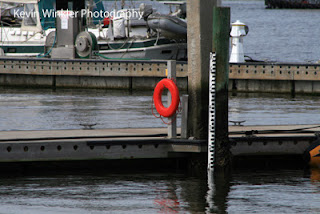Mayport's history began with the Timucuan Indians, who lived in
what is now the southeastern United States for more than 5,000 years.
These Indians developed a high level of technological achievement
compared to otherNorth American Indian cultures. Their life styles were
recorded by Jacques Le Moyne, an artist who accompanied French explorer
Jean Ribault.
When Ribault arrived to explore the area of Mayport and the St. Johns River of Northeast Florida, his landing site was Batten Island, across from present day Mayport Village. Ribault entered the river on the first day of May in 1562 with three ships. Upon Ribault's arrival he was met by the Timucuans, led by Chief Satouriba. After a short settlement, the French were expelled by a Spanish force from St. Augustine. Spain then ruled Florida until 1821 when it was ceded to the United States.
Historians have no recorded date for the original settlement of Mayport Village. The suggested dates range from 1562 when the French first settled to 1828 when the area really began to grow. Early settlers of Mayport came from France, Portugal and the island of Minorca. These people were fishermen and they thrived due to the close proximity of the continental shelf and large quantities of fish.
When Ribault arrived to explore the area of Mayport and the St. Johns River of Northeast Florida, his landing site was Batten Island, across from present day Mayport Village. Ribault entered the river on the first day of May in 1562 with three ships. Upon Ribault's arrival he was met by the Timucuans, led by Chief Satouriba. After a short settlement, the French were expelled by a Spanish force from St. Augustine. Spain then ruled Florida until 1821 when it was ceded to the United States.
Historians have no recorded date for the original settlement of Mayport Village. The suggested dates range from 1562 when the French first settled to 1828 when the area really began to grow. Early settlers of Mayport came from France, Portugal and the island of Minorca. These people were fishermen and they thrived due to the close proximity of the continental shelf and large quantities of fish.
Fishing has been the major economic base for the Village, but in the early days Mayport also supported itself through the lumber industry. Mayport Mills was the name of the fishing village until the end of the Civil War. Mayport was also a well known resort town during the 1800s, gaining a bold reputation with its hotels, prize fighters and taverns. Tourists from Jacksonville would cruise down the St. Johns River for a scenic ride along the Mayport coast. Boats would then dock and the passengers would dine or stay overnight.
Until 1899, boat transportation was the major access into and out of Mayport. Since Mayport was important for incoming and outgoing cargo, the Jacksonville and Atlantic Railroad was built to connect Mayport with Jacksonville. A railroad dock was then built where cargo would be transshipped inland. The dock stood where the present day U.S. Coast Guard Station now stands. The railway lasted until 1919 when it was abandoned. The fishing village became semi-isolated until Word War II with the construction of the U.S. Naval Air Station.



No comments:
Post a Comment
Note: Only a member of this blog may post a comment.